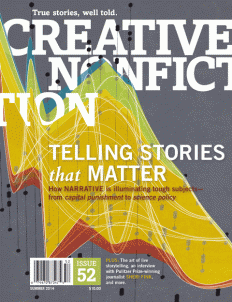I recently read a great interview on the site, Creative Nonfiction. Kristina Marusic interviews Emily Loose on the publishing business, secret ingredients to successful nonfiction and approaching agents. Loose has worked at big publishing houses, has taken seventeen books to the The New York Times bestseller list, and now is a book agent, editor and publishing consultant. Here’s the essence of her advice regarding successful nonfiction:
Four Ingredients to Nonfiction Success
Ingredient One: Powerful Narrative
It starts with the narrative. Loose says, “One of the most reliable drivers of success for a work of nonfiction is powerful narrative, whether that’s in the form of a nonfiction novel (In the Garden of Beasts, Seabiscuit, A Civil Action) or strongly character- and scene-driven expository writing (The Immortal Life of Henrietta Lacks, The Omnivore’s Dilemma, Moonwalking With Einstein).”
And take note: “Nonfiction that demonstrates a deft incorporation of a number of the techniques of fiction is one of the most sought-after types of writing by the major trade publishers and by the public.”
Ingredient Two: Stellar Research
The narrative has to be backed up and back up very well. As Loose advises, “Another way to really connect most reliably with a large audience is by doing the kind of exquisite research behind books like Quiet: The Power of Introverts by Susan Cain, The River of Doubt by Candice Millard, and Behind the Beautiful Forevers by Katherine Boo, about a topic of genuine interest or importance. With each of these books, it’s apparent that the writer has done a stellar job of accumulating and interpreting important research on an issue that is of clear concern to a well-defined and sizeable constituency of readers.”
Ingredient Three: An Established and Primed Readership
Loose is right on here in today’s publishing world: “This notion of a constituency of readers is key. Many books that have a strong narrative and for which the author has done extensive research don’t hit. This is often because they are on a subject for which it turns out there actually isn’t a bestselling-sized constituency for a full book-length revelation or story…Rather than trying to make a readership, authors should aim to tap into existing readerships.”
Smart nonfiction writers will also do this: “determine a lineage of successful books that they want to contribute to,” study the elements of those books “that made them connect so powerfully,” and use this to develop their own, original version that offers those core elements.
So, for example, “one such lineage would be that of urban ethnographies, and books in it would include Tally’s Corner, Rachel and Her Children, There Are No Children Here, and Random Family. Katherine Boo extended the lineage and brought it abroad to a slum in Mumbai in Behind the Beautiful Forevers.
Ingredient Four: Platform
Here it is not just having the platform when the book comes out, but building it up well before the publication of their book. These days the platform is well beyond traditional media, like TV, radio and print media. Building a digital media is very doable and more powerful than ever these days. There is even a whole area of platform development strategy called online “presence management.” It is beyond having a website; it entails social media strategy savvy and regularly tending to it in the most effective ways to build a following well before launch.

